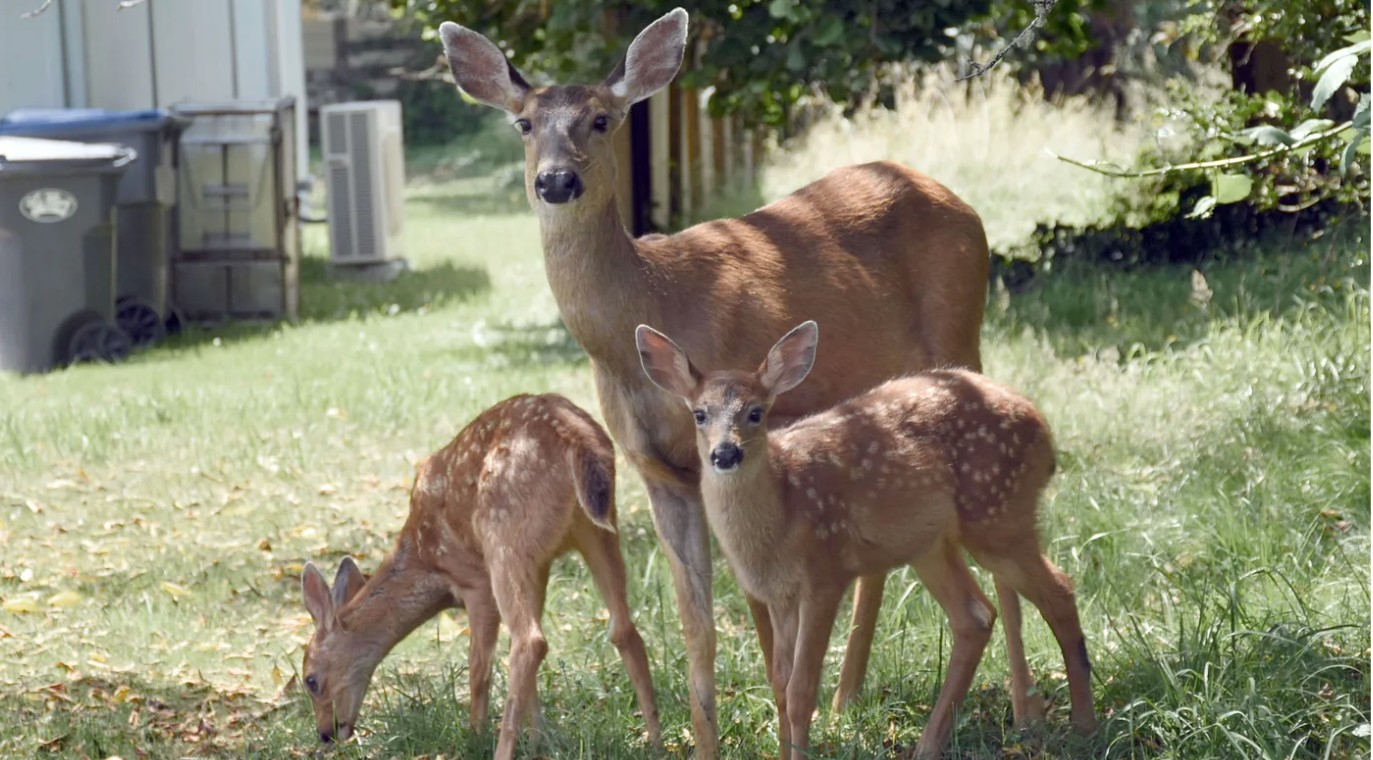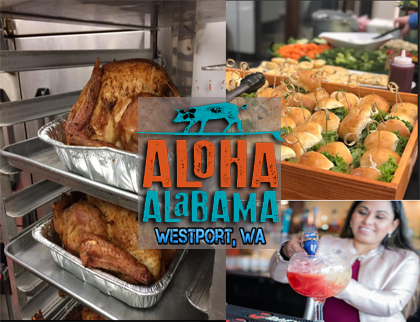Don't do it, even though so many are tempted to dfeed the deer, and other wildife they come across don't do it. The Washington Department of Fish and Wildlife (WDFW) recently adopted new rules, effective May 17, 2025, prohibiting certain wildlife feeding to help keep Washington’s wildlife healthy.
Living in Washington means living with wildlife, and many people may be tempted to feed wild animals near their homes or communities. People often think they are helping wildlife by feeding them, or simply hoping that providing food will give them a better opportunity to observe their wild neighbors. Unfortunately, feeding wildlife can cause more harm than good, especially with new wildlife diseases being found in Washington.
Advertisement
Ban on deer, elk, or moose feeding
This year, WDFW approved a rule proposal that prohibits feeding deer, elk, and moose in Washington, including providing salt blocks to attract wild animals. This rule was approved due to the high potential for feeding sites to promote disease spread. Of particular concern is chronic wasting disease (CWD), an always-fatal disease of deer, elk, moose, and related species (cervids) that was detected in Washington for the first time in 2024. There is no cure for CWD, and it has the potential to greatly impact Washington’s cervid populations.
When many animals gather in an area where they are being fed, it is easier for them to transmit disease between them. In the case of CWD, disease-causing prions are also spread through the environment. A sick animal at a feeding site may deposit prions in the environment that are spread to a different animal visiting the feed site later.
Even though CWD has only currently been detected in Eastern Washington, the statewide feeding ban prevents undetected disease outbreaks from spreading between populations.
Under the new rule, it is also illegal to feed any other Washington wildlife if doing so causes deer, elk, or moose to congregate in the area — even if you aren’t intending to feed them. If bird feeders or other items on your property are attracting deer, elk, or moose, please remove them to help limit the potential spread of CWD and other diseases.
Baiting deer, elk, or moose while hunting has also been prohibited under new rules adopted by WDFW this year, and WDFW is evaluating its own wildlife feeding practices in areas where elk are fed to reduce human-wildlife conflict in agricultural areas.
Impacts to wildlife health
The greatest drawbacks to feeding wildlife are the potential harms to their health and safety. Concentrating wildlife at a feeding site can make them more vulnerable to disease, predation, and poaching. If feeding areas draw animals across well-traveled roads, they are more likely to present a safety hazard and be hit by cars.
The digestive systems of free-ranging moose, elk, and deer do not digest non-natural feed properly. Fruit and grains are not a large part of their natural diet and can be extremely difficult for them to digest. They must use different gut microbes to break down corn and apples, for example, compared to what they use to digest their more fibrous natural foods. This mismatch in gut microbes can result in animals starving because they are unable to absorb the nutrients they need.
Fruit and grains don’t have the vitamins, minerals, and fiber that wildlife need to stay healthy. Feeding wildlife these foods is like feeding people nothing but candy bars! Deer, elk, and moose can even die from rumen acidosis, a metabolic disorder that occurs when an animal with a rumen (part of their digestive system) rapidly transitions from eating normal forage to consuming high volumes of fruit or grain. Every year, WDFW biologists are called out to perform necropsies of deceased wildlife with no obvious cause of death — and find their stomachs full of non-natural feed.
Other ways to support wildlife
There are many ways to support Washington’s wildlife without providing them with non-natural food sources. The best way is by promoting year-round native habitat at your home or in your communities. WDFW’s Habitat at Home program provides tips for supporting wildlife where you live, work, and play.
If you observe sick, injured, or dead animals, report them to WDFW using the online reporting tool. WDFW monitors these reports to address disease and other health-related concerns. If you think a wild animal needs help, please contact a permitted wildlife rehabilitator. Never attempt to rehabilitate wildlife yourself; it is against the law, and can make the situation worse. Permitted wildlife rehabilitators have the experience and training to help safely care for wildlife.
Wildlife viewing tips
Some people feed wildlife because it gives them an opportunity to observe them. Unfortunately, teaching wildlife to associate people with food can remove the wild animal’s natural fear of people, which can lead to human-wildlife conflict. It’s important to always observe wildlife from a distance and to not do anything to influence the animal’s natural behaviors. Wildlife viewing is most special when you have the chance to see the animal acting exactly how it would naturally, as if you weren’t even there.
WDFW’s Watchable Wildlife program has tips and information for how to safely and responsibly view wildlife in Washington, whether you’re at home, in your community, or visiting public lands.









